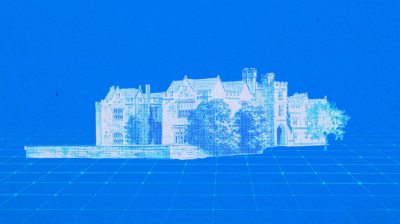The Historic Gosselin Mill in Lévis Faces Demolition Threat
A Journalist's Reflection on the Battle to Preserve Cultural Heritage
In the quaint city of Lévis, Quebec, nestled along the picturesque shores of the St. Lawrence River, stands the iconic Gosselin Mill—a tangible piece of history, an architectural gem, and a testament to the region's industrial past. However, the once vibrant symbol of economic prosperity now faces an uncertain future as the specter of demolition looms large over its weathered façade.
As a seasoned journalist with a decade of experience, I've witnessed the ebb and flow of progress, often at the expense of heritage. Yet, the plight of the Gosselin Mill strikes a chord that resonates beyond the confines of local politics and urban development—it speaks to the heart of cultural identity and the delicate balance between preservation and progress.
The Gosselin Mill, with its weather-worn bricks and towering smokestacks, stands as a silent sentinel, bearing witness to the industrial revolution that once powered this riverside community. Built in the late 19th century, its sprawling complex housed a bustling textile factory—a hub of activity that sustained generations of families and fueled the region's economic growth.
Yet, as time marched on and industries evolved, the once-thriving mill fell into disrepair, its machinery silenced, its halls echoing with the whispers of bygone days. Despite its faded grandeur, the Gosselin Mill remained a cherished landmark—a tangible link to a bygone era, a reminder of the toil and ingenuity that shaped our collective history.
In recent years, as urbanization encroached upon the outskirts of Lévis, the fate of the Gosselin Mill became increasingly uncertain. Developers eyed its prime riverfront location with dollar signs in their eyes, envisioning sleek condominiums and trendy boutiques in place of its weathered walls.
Yet, for many residents, myself included, the Gosselin Mill represents more than just bricks and mortar—it embodies the spirit of community, the resilience of the human spirit, and the enduring legacy of those who came before us. Thus, when news broke of plans to demolish the historic landmark to make way for yet another faceless development, a groundswell of opposition rose to meet the challenge.
Uniting Voices, Preserving Heritage
In the face of mounting pressure, a grassroots movement emerged, fueled by passion and a shared commitment to preserving the city's cultural heritage. Ordinary citizens, historians, and preservationists joined forces, rallying support and raising awareness through petitions, public forums, and social media campaigns.
Their efforts bore fruit as local authorities took notice, recognizing the significance of the Gosselin Mill and the importance of safeguarding it for future generations. Negotiations ensued, compromise was reached, and plans were set in motion to repurpose the historic site as a cultural center—a living monument to the past and a beacon of hope for the future.
Looking Ahead: A Beacon of Hope
As I stand before the Gosselin Mill today, its weathered walls imbued with new purpose and vitality, I am reminded of the power of community and the resilience of the human spirit. The battle to save this historic landmark serves as a poignant reminder that while progress is inevitable, it need not come at the expense of our shared heritage.
In preserving the Gosselin Mill, we honor not only the legacy of those who built it but also the collective memory of a community bound together by a common past and a shared vision for the future. May it stand as a beacon of hope, guiding us forward as we navigate the ever-changing currents of time, reminding us of the importance of cherishing our roots even as we reach for the stars.
The story of the Gosselin Mill serves as a poignant reminder of the ongoing battle to preserve our cultural heritage in the face of relentless urbanization and development. Its salvation from the brink of demolition stands as a testament to the power of community activism, the resilience of historic preservation, and the enduring value of our shared history.
However, our work is far from over. The Gosselin Mill is but one chapter in a larger narrative—a narrative that continues to unfold in communities around the world as we grapple with the competing forces of progress and preservation. As stewards of our cultural heritage, it falls upon us to remain vigilant, to raise our voices in defense of the landmarks that define us, and to advocate for policies that prioritize the protection of our shared past.
In the wake of the Gosselin Mill's preservation, let us not grow complacent but rather emboldened by our success. Let us continue to champion the cause of historic preservation, to celebrate our heritage, and to ensure that future generations inherit a world enriched by the stories of those who came before us.
For in the end, the true value of the Gosselin Mill lies not in its bricks and mortar but in the stories it tells, the memories it preserves, and the legacy it leaves behind. As we stand on the precipice of a new era, let us heed the lessons of the past and forge a future where our cultural heritage is cherished, protected, and celebrated for generations to come.






